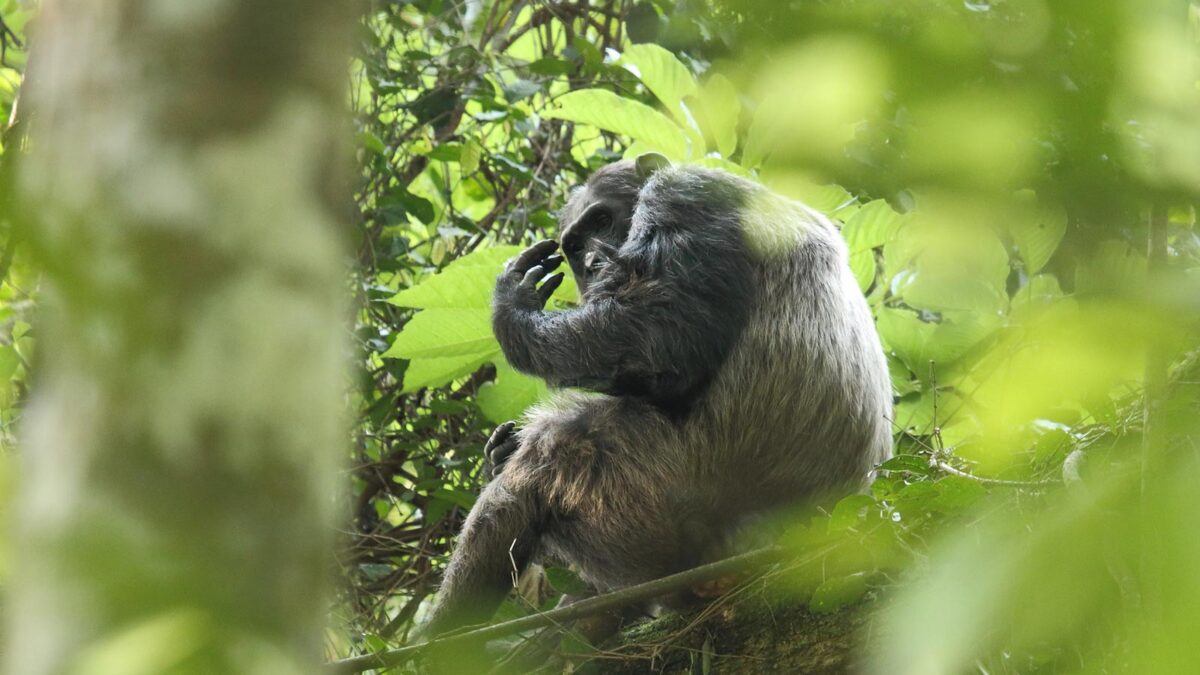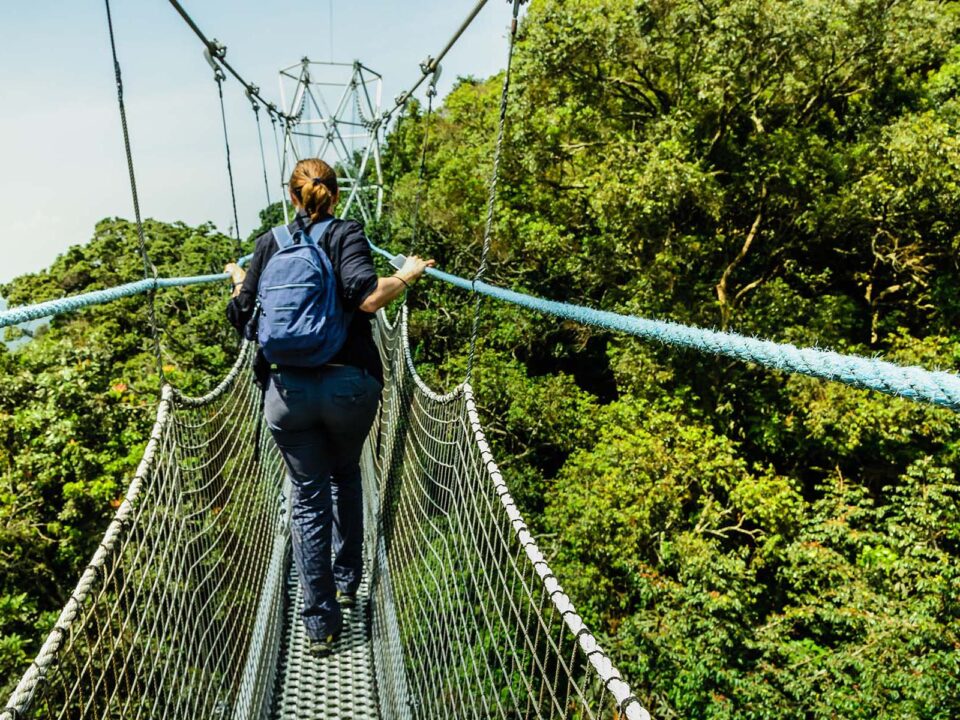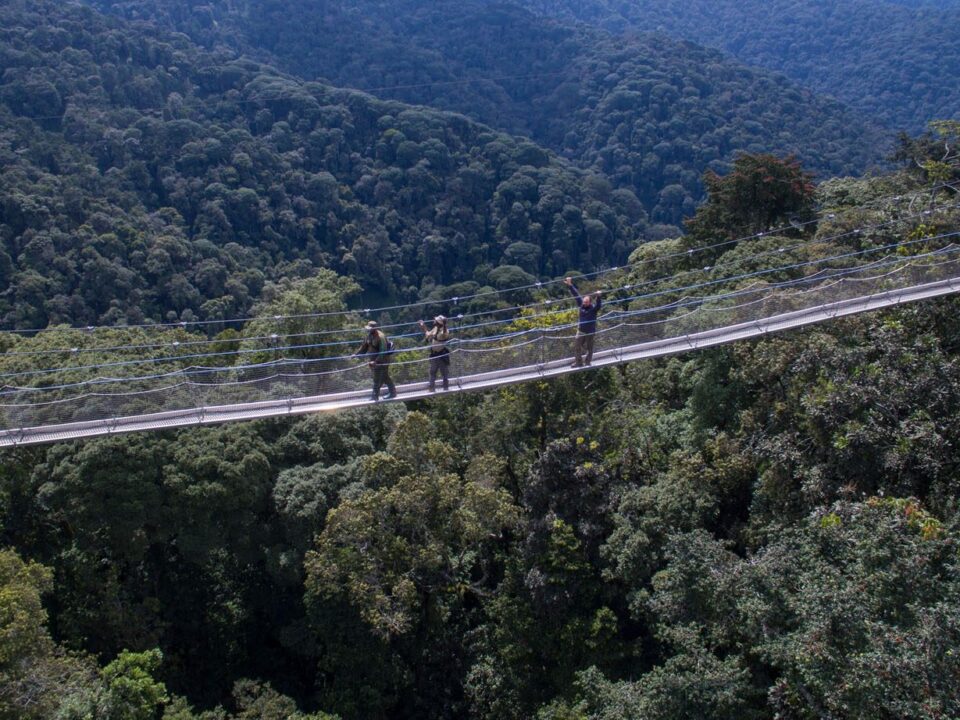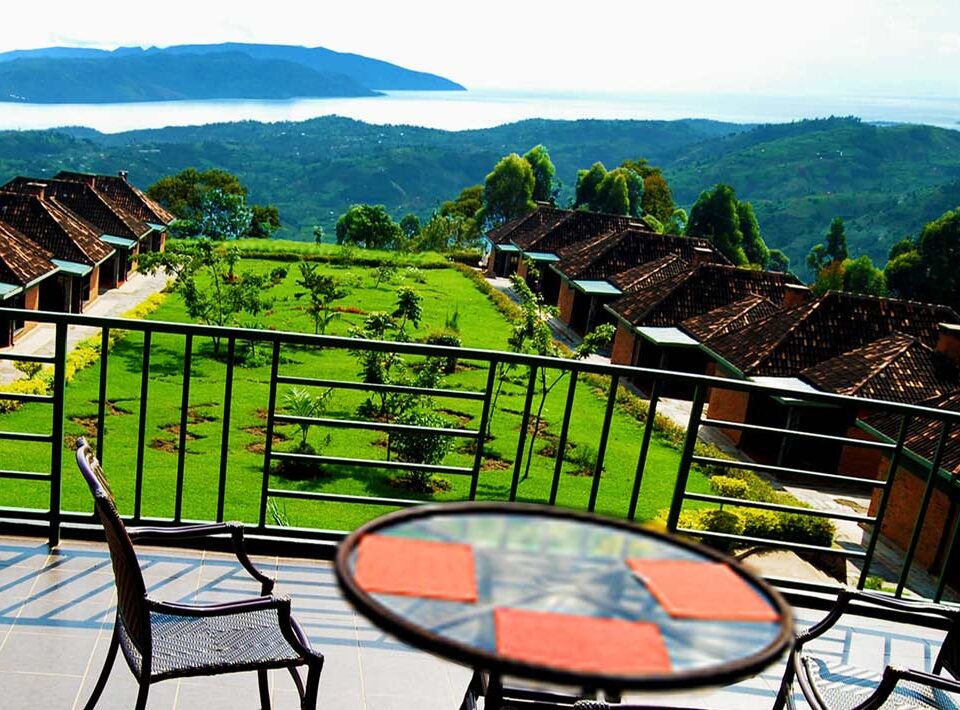Safaris & Tours to Nyungwe Forest National Park

Nyungwe Top View Hill Hotel
September 13, 2023
Monkey Tracking in Nyungwe Forest National Park
September 13, 2023Exploring Nyungwe Forest National Park: A Safari to Remember
Discover the Wonders of Nyungwe Forest National Park
Embark on a captivating journey through Nyungwe Forest National Park, one of Africa’s most ancient rainforests, teeming with biodiversity and natural beauty. This mountainous haven is a thriving ecosystem, home to a variety of wildlife, including a small yet enchanting population of chimpanzees, as well as 12 other primate species, such as the unique L’Hoest’s monkey, endemic to the Albertine Rift. With an impressive selection of 15 trails, some of which are detailed below, along with a range of activities, visitors can opt for an introduction to the forest’s treasures or immerse themselves for a week or more in the allure of one of Africa’s most magnificent woodlands.
While primate tracking tops the list of many visitors, taking the time to soak in the primal atmosphere offers a deeper connection with this extraordinary environment.
Botany enthusiasts will revel in the presence of 1,068 plant species and 140 orchids. Birdwatching enthusiasts will find Nyungwe a true paradise, with 322 bird species, including the elusive Red-collared Babbler and 29 other endemic species of the Albertine Rift. Butterflies, fluttering gracefully, are a common sight, with a minimum of 120 species recorded.
Nyungwe is inhabited by 75 distinct mammal species, including the elusive serval cat, mongoose, Congo clawless otter, and the majestic leopard, among others. Some of these creatures tend to be rather shy, making sightings a matter of serendipity.
The experience is adorned with memorable and photogenic moments, such as hiking to the Isumo waterfall or strolling along the canopy walk suspension bridge. The park’s periphery is adorned with lush tea plantations, and at Gisakura, you can encounter a habituated troop of Ruwenzori colobus monkeys and forest fringe birds.
With abundant rainfall, Nyungwe plays a vital role as Rwanda’s primary catchment area, supplying water to 70% of the country’s needs.
A prominent ridge traversing the forest acts as a watershed, dividing the drainage systems of the Nile and the Congo. A spring on Mt. Bigugu’s slopes is believed to be the most distant source of the Nile, the world’s longest river.
Activities and Safaris in Nyungwe Forest National Park
Chimpanzee Trekking
Nyungwe Forest National Park is home to the largest chimpanzee population in Rwanda, with approximately 400 individuals. Chimpanzee trekking is a premier activity in Nyungwe Forest National Park. On the day of your trek, you’ll journey to Gisekura Park headquarters, where you’ll receive essential briefings regarding trekking rules. From there, you’ll embark on a two-hour drive to Cyamudongo Park Station, located near the park. The forest awaits, and your adventure into the world of chimpanzees begins.
Bird Watching
With over 300 bird species residing in Nyungwe, the park stands as a prime birding destination in Rwanda. Nyungwe’s manageable walking terrain makes it a favored location for birdwatchers, compared to the more challenging terrain of Volcanoes National Park. Out of the park’s bird population, 121 species are forest birds, while 27 are endemic to the Albertine Rift Valley. Among the most frequently spotted birds in Nyungwe are the Rockefellers sunbird, Chapin’s flycatcher, Great blue Turaco, red collared mountain babbler, Rear Grauer’s rush warbler, Rwenzori Turaco, white-tailed flycatcher, Rwenzori batis, barred long-tailed cuckoo, Rwenzori nightjar, Rwenzori hill babbler, yellow-eyed black flycatcher, Congo bay owlet, mountain sooty Boubou, and Neumann’s warbler, among others. Experienced guides assist in spotting and identifying these avian wonders in the forest.
Monkey Trekking
Nyungwe Forest National Park hosts over 300 monkey species, making it an exceptional destination for monkey trekking. During your visit, you may encounter various monkey species, including L’hoest monkeys, black and white colobus, blue monkeys, and red-tailed monkeys, to name a few. These monkeys share similar traits but are distinguished by their distinctive colors. Monkey trekking is a delightful experience, as these lively and playful creatures keep you engaged with their constant movements, vocalizations, and agile tree-bound acrobatics.
Forest Walks and Hiking Trails
Exploring Nyungwe Forest National Park is best experienced through forest walks and hiking trails, providing a deeper immersion into its beauty. The park offers more than 13 hiking trails, covering approximately 130 kilometers in total, leading travelers to various points of interest such as waterfalls, caves, and swamps. Each trail unveils unique features and attractions. Some of the notable trails include the Igishigishigi trail, Bigugu trail, Ngabwe trail, Isumo waterfall trail, Kamiranzovu marsh trail, Karamba birding trail, Source of the Nile trail, Irebero trail, Muzimu trail, Imbaraga trail, Congo Nile trail, Umoyove trail, and Rukuzi trail, among others.
Canopy Walk
The canopy walk is a distinctive and exhilarating experience, available exclusively in Nyungwe Forest National Park within East Africa. This 200-meter-long walkway, suspended 60 meters above the forest floor, offers an aerial perspective of the park’s pristine landscape, abundant wildlife, neighboring communities, the Virunga volcanoes, and attractions in neighboring countries. The two-hour walk commences and concludes at the park headquarters located at the Uwinka Information Center.
The Best Time for Safaris & Tours in Nyungwe Forest National Park
Nyungwe National Park enjoys a pleasant climate that enhances the safari experience, particularly during the dry season. Situated at elevations between 1600 and 2000 meters above sea level, the park benefits from a cool, temperate climate that visitors find comfortable. Rwanda’s higher altitude, combined with its latitude just two degrees south of the equator, creates favorable tropical conditions. Daytime temperatures typically range from 25°C to 27°C (77°F to 81°F), while the nights provide cooler temperatures, rarely falling below 13.5°C (56°F) and seldom exceeding 16°C (61°F). Consequently, the best time to explore Nyungwe Forest National Park is from late May to early September and from December to February.
How to Get to Nyungwe Forest National Park
By Road: From Kigali via Muhanga-Huye
Nyungwe Forest National Park is located in the southern region of Rwanda, approximately 200 kilometers (124 miles) from the capital city, Kigali. The picturesque journey to the park via road leads travelers through Muhanga and Huye, with stops at the King’s Palace in Nyanza and the town of Butare. From Butare, you’ll navigate hilly roads, ultimately arriving at the park headquarters in Gisekura. For visitors starting from Huye (Butare), the park is only 87 kilometers (54 miles) away. Many tourists opt for an overnight stay in Huye to enjoy activities along the way, as the direct trip can be demanding. If you’re flying into the area, Rusizi/Kamembe Airport is your arrival point. Nyungwe Forest National Park is conveniently situated just 55 kilometers (34 miles) away, with the drive typically taking about an hour. Most visitors choose to explore Nyungwe Forest as part of a comprehensive 4×4 tour around the country, accompanied by an experienced driver-guide.
By Air
For travelers seeking air transportation, Akagera Aviation offers charter helicopter transfers directly to Nyungwe Forest National Park, including a convenient landing at the renowned One & Only Nyungwe House. Alternatively, those opting for Rwanda Air will disembark at Kamembe Airport in Rusizi, followed by an hour’s drive to the park headquarters.




